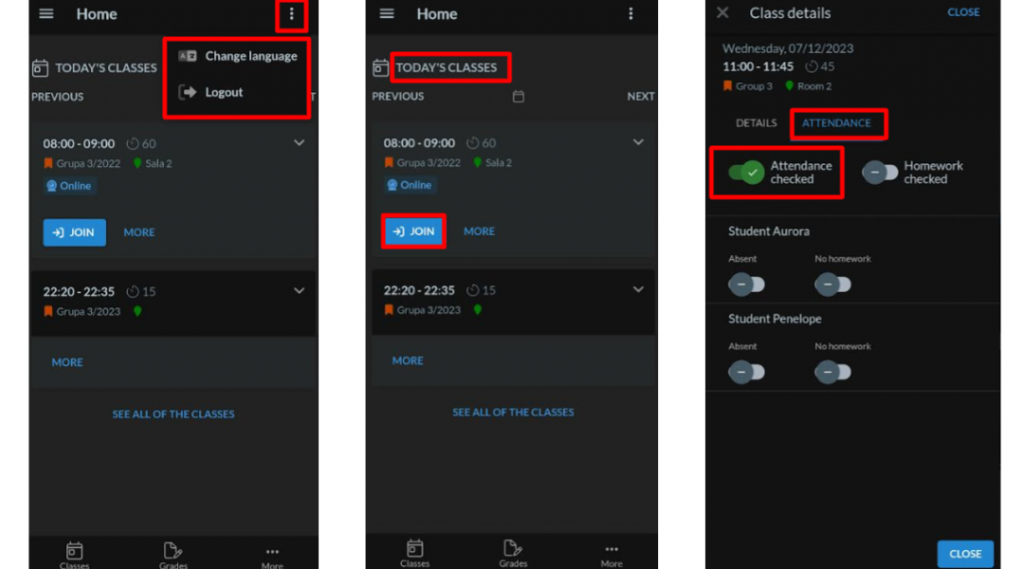
A few years ago, we started providing an anonymous survey in our system, both for administrators and instructors. We conduct such surveys approximately every six months. Several years ago, we described the results of this survey and responded to the feedback we received from you. We want to return to publishing such summaries, and hence the idea for the post you are currently reading 😉
The survey we provide is based on the Net Promoter Score (NPS) indicator. Before we discuss the results, here is a brief explanation of what the NPS indicator is and how we measure it.
NPS – What Is It?
Net Promoter Score (NPS) is a measure used to assess customer loyalty and their inclination to recommend a particular product, service, or company to others. It is a popular tool in customer satisfaction research and customer relationship management. In short, NPS allows us to gauge how willing customers are to recommend a specific brand.
The NPS measurement process involves the following steps:
- Survey: Customers receive a key question: „On a scale of 0 to 10, how likely is it that you would recommend our company/product/service to others?” Respondents rate this likelihood on a scale from 0 to 10, where 0 indicates dissatisfaction, and 10 signifies a strong willingness to recommend the company.
- Classification of Respondents:
- Promoters: Individuals who answered 9 or 10. These are loyal customers willing to recommend the company.
- Passives: Individuals who answered 7 or 8. These are satisfied customers who may not actively promote the company but won’t discourage others either.
- Detractors: Individuals who answered from 0 to 6. These are dissatisfied customers who could negatively impact the company’s reputation.
- NPS Calculation: The percentage of detractors is subtracted from the percentage of promoters. The result falls within the range of -100 to 100, where a higher score is better.
NPS Formula:
NPS = % promoters − % detractors
A good score is considered in the range of 0-50, excellent in the range of 50-70, and world-class above 70.
The NPS value serves as an overall assessment of customer loyalty. After analyzing the results, we aim to understand why customers gave specific ratings and then take actions to improve areas that require attention.
NPS 2023 – Summary of Results
Introduction is behind us, so it’s time to present the results of last year’s survey! The average rating among system administrators is 7.93, and the NPS (Net Promoter Score) is 33. We are very pleased because both results are the highest we have achieved so far 🤩
We are continuously working to improve the quality of the system, so that using LangLion becomes even more satisfying and efficient for our customers every day. The fact that you appreciate it makes us very happy. With each conducted survey, the result gets better, which also fills us with joy. We will strive to make it only better 💪
The survey also provides an opportunity to leave your comments. We read them regularly, so it’s the perfect place to share your thoughts on LangLion.
Before we address any concerns raised in the surveys, we would like to sincerely thank you for every warm word. You often pointed out:
- Reliable and professional technical support;
- Comprehensive language school management;
- Clear layout and intuitive operation.
However, there were also opinions that we have decided to address.
LangLion App for Teachers needs improvement & no version available for iOS

Previously, the application for instructors was only available on Android, and we received numerous requests expressing the need for an iOS version. There were also reports about the functionality and layout of the app that could be improved. We decided to respond to your needs and create a new application, available on both operating systems. Our goal was to make it functional and consistent with the app for students. It includes all the essential features, but we continue to develop and release updates. Our aim is for the app to have all the necessary functions and be able to replace the browser version in situations where computer access is unavailable.
You can read more about the LangLion App for Teachers in the recent update posts: the one from July and December.
Too few or too many settings
We understand that every school is different, and that’s why we offer he opportunity to meet with us and test the system so you can see if LangLion is exactly what you were expecting. We are committed to ensuring that our platform addresses your challenges and helps you in your daily work. Moreover, most settings can be freely configured by the school. To make it easier to start working with the system, we initially define basic settings, but we may not be able to accommodate every specificity. Certainly, LangLion is not for everyone, but we believe that sometimes it’s worth changing certain procedures and mechanisms to streamline a particular process.
The LangLion Platform is stagnant
Consistently, for several years, we introduce 5-10 updates every quarter, which we discuss during webinars and in blog posts. We also send newsletters when a new post appears on the blog. Considering this, we cannot agree with the statement that LangLion is not evolving or being updated. While we may not be able to implement every suggestion, we strive to respond to your needs as best as possible and propose optimal solutions. If, for any reason, you are not receiving information about updates, we encourage you to subscribe to our newsletter. We also encourage you to follow our social media profiles, where we publish information about new blog posts and system updates (for example, we run a series called „Function of the Week,” and many of the featured functions are new additions).
Where can you find us? Follow us on Instagram, Facebook, LinkedIn, and YouTube.
And finally… the price
In one of the received comments, there was expressed doubt about the justification of increasing prices with the growth of students. When we started our operations, we deemed this billing model to be the most fair. Why? Both smaller and larger schools would be able to afford the implementation of the system, and we would be able to more precisely calculate the costs of its maintenance. It’s worth noting that with an increase in the number of students, the cost of using LangLion rises, but not linearly. The more students, the lower the cost per individual student, so a school with 500 active students does not pay twice as much as a school with 250 students.
The price list is available on our website.
Thank you for being with us! ❤️
That’s all we wanted to share with you today. We hope that the post was interesting for you and that you learned many new things from it. If you would like to get in touch with us, you can find all the contacts here. Until next time!

